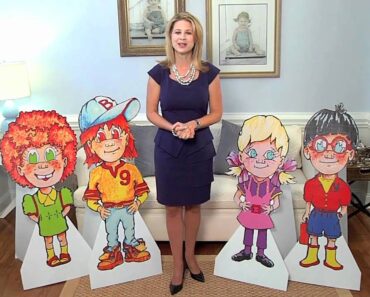Image: Shutterstock
Meningitis is an infection and subsequent inflammation of the protective membranes (meninges) around the brain and the spinal cord. Pathogens, such as bacteria, viruses, or fungi, can cause meningitis in babies. Bacterial meningitis is usually the most dangerous, and children younger than two years have the highest risk of developing it (1) (2).
Read this article to know the symptoms, causes, treatment, and prevention of meningitis in babies.
Symptoms Of Meningitis In Babies
Infants and toddlers may have varying signs and symptoms based on the pathogen responsible for the infection. The most common symptoms in babies may include the following (3).
- Fever
- Bulging soft spot on the head (bulging fontanelle)
- Vomiting
- Skin rash
- Increased frequency of fussiness
- Colic and inconsolable loud crying
- Loss of appetite and poor feeding
- Lethargy and extreme sleepiness
- Postural abnormalities such as the arching of the neck and back
- Seizures
Toddlers older than one year may display the following additional symptoms.
- Backache
- Headache
- Stiffness and pain in the neck
- Sensitivity of eyes to bright light (photophobia)
Consult a doctor if you notice any of these signs since timely diagnosis and treatment could ensure favorable outcomes.
Causes Of Meningitis In Babies
Meningitis is primarily caused by the entry of bacteria, viruses, or fungi into the cerebrospinal fluid, which surrounds the brain and the spinal cord. The pathogens invade the meninges, leading to the tissues’ inflammation eventually.
There are various pathogens that may cause meningitis, depending on its type.
1. Viral meningitis
Viral meningitis is usually not the most deadly form of meningitis, but it is the most widespread. The following viruses may cause meningitis most often as a complication of the primary infection (4).
- Non-polio enteroviruses: Non-polio enteroviruses are responsible for the majority of viral meningitis cases in the United States. The viral infection can be transmitted to the baby through feces. It can also transmit through contact with bodily secretions, such as saliva, nasal mucus, and blister fluid of an infected person. The pathogen could enter the body if the baby touches their eyes, nose, or mouth with contaminated hands (5).
- Influenza virus: The influenza virus causes a contagious respiratory infection called flu. It transmits via droplets from the nose and mouth released during coughing, talking, or sneezing (6) (7).
- Measles and mumps viruses: Mumps and measles are contagious diseases that can spread to babies via sneezing, coughing, or touching infected surfaces. Viral meningitis may occur as a complication of mumps and measles infections. Taking an MMR vaccine can protect babies against these two infections (8) (9) (10).
- Varicella-zoster virus: Varicella-zoster virus causes a primary and latent infection. Primary infection with the virus leads to chickenpox. This infection remains in the nerves in a dormant form called latent infection. It may later cause shingles. Meningitis is one of the potential complications of the primary and latent form of the infection. The virus spreads via direct contact with blisters and droplets expelled during sneezing and coughing (11).
- Herpes simplex virus: Herpes simplex virus can cause oral sores (HSV-1) and genital herpes (HSV-2). Babies may get the virus from their mother during birth (birth-acquired herpes) or if kissed by an infected person (12).
- West Nile virus: This virus transmits through an infected mosquito bite, causing West Nile fever. A severe form of illness with potential complications, such as meningitis, tends to be rare and affect one in 150 infected individuals (13).
- Lymphocytic choriomeningitis virus (LCMV): LCMV spreads via the bite of infected house mice or contact with their urine, droppings, and nesting materials. It may also transmit from an infected mother to the fetus (14).
2. Bacterial meningitis
Bacterial meningitis is usually a severe and potentially fatal form of meningitis. Babies and toddlers are usually most susceptible to this illness than children of other age groups.
The following bacteria may cause meningitis along with primary infection (15).
- Group B Streptococcus: Babies may get these bacteria from their mothers at the time of birth.
- E. coli: E. coli may also pass from mother to baby during vaginal delivery. The bacteria also spread through contaminated food. An infected parent or caretaker may transmit the pathogen if they do not wash their hands after using the toilet and handle the baby.
- Streptococcus pneumoniae: These bacteria are usually transferred via droplets released in the air during coughing and sneezing.
- Listeria monocytogenes: An infected mother may transmit the bacteria to the fetus or the baby during birth. The bacteria primarily spread through contaminated or raw food items (16).
- Neisseria meningitidis: The transmission occurs via respiratory droplets expelled by an infected person while sneezing or coughing. An infected person may also transmit it if they kiss the baby. This bacterium causes meningitis as its primary infection.
- Haemophilus influenzae type b (Hib): The bacteria are present in the nose and throat of an infected person. It spreads via respiratory droplets expelled while coughing or sneezing. Many individuals infected with the bacteria may not have any symptoms.
3. Fungal meningitis
Fungal meningitis is often caused by the movement of fungi from other body parts to the brain or spinal cord, often through the cerebrospinal fluid. A baby could catch the primary fungal infection through inhalation of fungal spores. Fungi often thrive in conducive environments, such as soil, decaying plant matter, and bird or bat droppings.
The following fungi may cause fungal meningitis (17).
- Cryptococcus
- Histoplasma
- Blastomyces
- Coccidioides
- Candida
Fungal meningitis tends to be more common in babies with high-risk factors, such as premature birth and compromised immunity to diseases or medications.
Diagnosis Of Meningitis In Babies
The doctor may perform a physical examination and ask about the baby’s medical history. The following tests could be conducted to determine meningitis and its possible cause (3).
- Blood tests and cultures: A blood sample is collected and cultured in a relevant medium. If the culture shows colonies of pathogens, it could indicate an infection. Blood could also be tested for the presence of infection markers.
- Lumbar puncture: It is also called a spinal tap. This test involves drawing a small quantity of cerebrospinal fluid (CSF) from the spinal cavity through a needle inserted in the lower back. The fluid is tested for the presence of pathogens.
- CT scan or MRI: CT scan could be used to check for swelling in the brain and rule out other conditions. An MRI can provide a detailed image of the meninges.
- Nasal, throat, or rectal swabs: In some cases, the doctor may order a culture of the nasal, throat, or rectal swabs to check for pathogens.
Treatment Of Meningitis In Babies
The treatment of meningitis depends on the causative pathogen. The following treatment options may be considered depending on the type of meningitis (3).
- Viral meningitis: Mild infection may resolve on its own in ten days, and the baby could be provided supportive treatment to reduce symptoms. Immunocompromised babies and those with severe illness may require hospital care. Customized intravenous antiviral treatment may be provided based on the type of virus causing the illness.
- Bacterial meningitis: Bacterial meningitis may progress rapidly, leading to permanent brain damage. Hence, immediate treatment is critical. The baby could be provided singular or multiple intravenous antibiotics. A corticosteroid may be given orally to reduce inflammation and intracranial pressure. The medications could be frequently modified to improve outcomes and prevent any permanent damage.
- Fungal meningitis: Babies with fungal meningitis may be treated with intravenous antifungal medication. Additional medications could be provided, depending on the symptoms. Babies with a weak immune system might require lengthier treatment.
Prevention Of Meningitis In Babies
The following preventive measures could protect the baby from meningitis.
1. Vaccination
Vaccination or immunization can significantly reduce the risk of several viral and bacterial illnesses. Vaccinations against several causative agents are already included in the baby’s immunization program in many countries. A vaccine may not provide 100% immunity but could significantly reduce the risk of severe illness and complications. The duration of illness may also be shorter for vaccinated babies.
Below are few notable vaccines to protect your baby against viral and bacterial meningitis.
- Hib (Haemophilus influenzae type b) vaccine: This vaccine is usually given to an infant starting at two months. There are three or four doses, depending on the brand, and they are administered by the age of 12-15 months (18).
- Meningococcal vaccine: This vaccine is effective against bacteria called Neisseria meningitidis. It is generally given starting at 11 to 12 years of age, followed by a booster injection at 16 years. Babies might be given the vaccine starting at two months of age if they are at high risk of developing meningitis from the bacteria (19).
- Pneumococcal vaccines: These vaccines are effective against the infection caused by Streptococcus pneumoniae. There are two types of vaccines PCV13 and PPSV23. Babies under two years of age should be given PCV13 at 2, 4, 6, and 12 through 15 months of age (20).
- Influenza vaccine: Babies older than six months could get the flu shot each year. A baby younger than six months cannot take the vaccine but can be protected if the family members take the vaccine (21).
- Varicella vaccine: Babies aged 12-15 months are eligible for the varicella vaccine. There are two doses. The first dose is administered between 12 and 15 months, and the second dose between four and six years (22).
- MMR vaccine: Babies can get the first dose of MMR vaccine between 12 and 15 months and the second dose between four and six years (23). This vaccine protects the baby from measles, mumps, and rubella infections.
Speak to a pediatrician if you have missed any vaccination from the baby’s immunization schedule. In most cases, the baby can get the missed shot immediately.
2. Preventive measures
The appropriate measures could prevent or reduce the chances of a baby’s exposure to a causative pathogen. You may observe the following practices and procedures (24).
- Wash hands properly with soap and water for at least 20 seconds after using the toilet, changing the baby’s diaper, or after sneezing or coughing.
- Keep the baby away from persons or family members who are unwell. Do not let someone with cold sores kiss the baby.
- If you are unwell, wear a mask while around the baby or when handling their personal items.
- Keep the baby’s room clean and disinfect any potentially contaminated surfaces with baby-safe disinfectants.
- Avoid sending the baby or toddler to daycare if there is an infection outbreak in your region or community.
- Take appropriate measures to prevent mosquito bites. Dress the baby in clothes that cover them well. Use mosquito nets or baby-safe mosquito repellents at home.
- If you have rats or other pests at home, take appropriate measures to get them eliminated and disinfect your house.
- If you are pregnant, take appropriate care to prevent infections, which may pass to the fetus.
Babies could be vulnerable to meningitis, but most recover with minimal long-term complications. Several infections that lead to meningitis are preventable. You may get your baby vaccinated even if you accidentally missed a shot. Timely immunizations and good preventive care could protect your baby from meningitis.


































